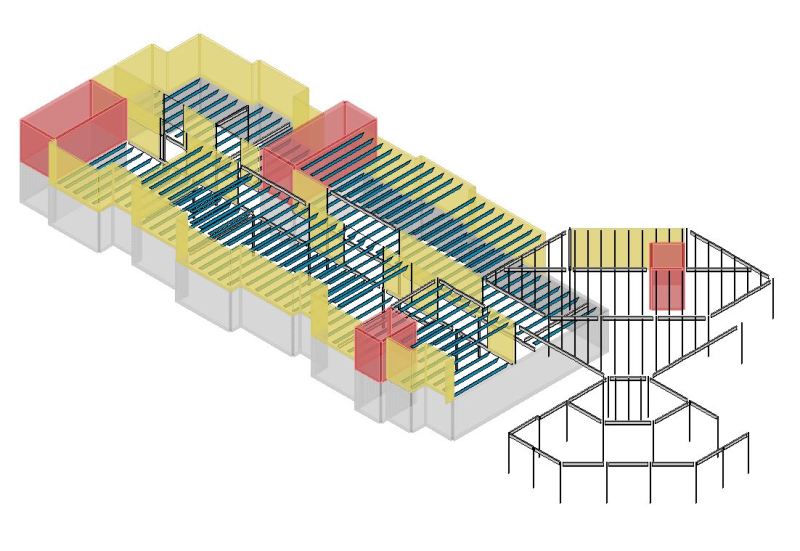I am interested in software recommendations for the sole purpose of load take down. I can design elements all day long but I really dislike tracking loads through complex structures by hand. Tedious and time consuming. And problematic for QC checking I find. To that end, what's your favorite software package in this regard? Additional things to consider:
1) Element design features are nice but not necessary.
2) Two way load distribution would be nice but robust one-way would satisfy most of my needs.
3) Member continuity would be nice but simple span would satisfy most of my needs.
4) Ability to handle lateral loads would be nice but it not absolutely necessary.
5) I want to be able to model structures three dimensionally.
6) Rapid model generation is important. Woodworks has a tool called Concept that is similar to what I want but it's far too slow for model building. Like trying to sign Christmas cards with my foot. Not that there's anything wrong with that.
7) I'd like to be able to handle headers and posts in light framed wood and cold formed metal buildings. Obviously, most software packages do a great job of high-rise towers with regular column grids.
I'm quite familiar with Woodworks, Visual Analysis, CSI offerings, and RISA. Of that bunch, RISA 3D + FLOOR strikes me as the front runner. Regarding #4, Mitek and its competitors have some great software packages but those are not publicly available to my knowledge.
I like to debate structural engineering theory -- a lot. If I challenge you on something, know that I'm doing so because I respect your opinion enough to either change it or adopt it.
1) Element design features are nice but not necessary.
2) Two way load distribution would be nice but robust one-way would satisfy most of my needs.
3) Member continuity would be nice but simple span would satisfy most of my needs.
4) Ability to handle lateral loads would be nice but it not absolutely necessary.
5) I want to be able to model structures three dimensionally.
6) Rapid model generation is important. Woodworks has a tool called Concept that is similar to what I want but it's far too slow for model building. Like trying to sign Christmas cards with my foot. Not that there's anything wrong with that.
7) I'd like to be able to handle headers and posts in light framed wood and cold formed metal buildings. Obviously, most software packages do a great job of high-rise towers with regular column grids.
I'm quite familiar with Woodworks, Visual Analysis, CSI offerings, and RISA. Of that bunch, RISA 3D + FLOOR strikes me as the front runner. Regarding #4, Mitek and its competitors have some great software packages but those are not publicly available to my knowledge.
I like to debate structural engineering theory -- a lot. If I challenge you on something, know that I'm doing so because I respect your opinion enough to either change it or adopt it.


